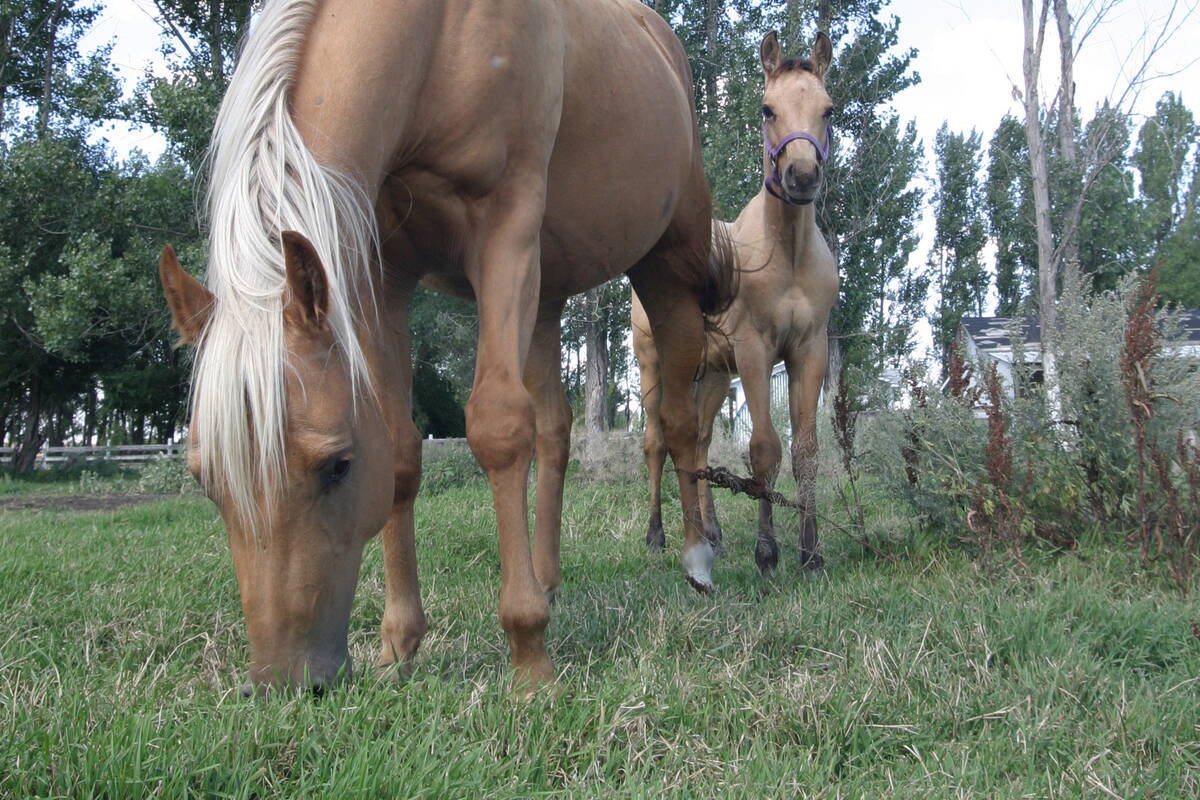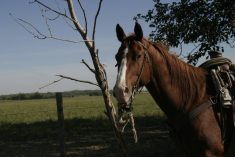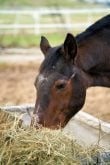The existence of tapeworms in horses has rarely been a topic of much concern as the significance of infestation to the health of the horse has for the most part been uncertain.
Not only is it difficult to reproduce the complicated life cycle of the tapeworm under study conditions it is also unreliable to gather proof of their existence in the individual horse via fecal assays.
Recently a drug called praziquantel has been approved for use in horses and targets the treatment and control of tapeworms specifically. Whenever praziquantel is added to a deworming product that already contains a macrocyclic lactone drug (i.e. moxidectin and/or ivermectin) the name of the combination product will have the suffix “plus,” “max,” or “gold,” in it. Generally the cost of the combination product will be higher.
Read Also

Ignoring growth plates sabotages young horse development
Young horse training plans and workloads must match their skeletal development. Failing to plan around growth plates can create lifelong physical problems.
Tapeworms are an intestinal parasite of the horse. The adult tapeworm consists of a head with a set of suckers which attach to the intestinal wall and a segmented body. The segmented body of the tapeworm is similar to a freight train with its string of boxcars. Within each boxcar or segment is a complete set of reproductive organs that can produce a group of eggs.
As the eggs develop in a lower segment of the worm’s body, the last segment or caboose drops off. The casing of the “caboose” or segment containing eggs may rupture while inside the horse’s intestinal tract or pass through to the outside environment. If the casing ruptures while inside the horse’s intestinal tract the eggs are released and may be identified in a fecal assay. However, the process is intermittent and the eggs are rather difficult to identify with traditional methods of assay.
If the caboose of eggs does not rupture until it passes outside the horse, the tapeworm segment can be seen in the manure of the horse and resembles a small cucumber seed. Once on the ground, the manure is composted with the help of an oribatid and/or free living forage mite. However, if the mite also ingests a tapeworm egg, the egg will develop into the larval stage once inside the mite. When the larvae-carrying mite crawls up onto the grasses and is swallowed by a grazing horse, the tapeworm larvae will mature in the horse’s intestine within six to 10 weeks. Unlike other intestinal parasites of the horse, tapeworms need an intermediate host in the environment to complete their life cycle — the microscopic forage mite.
Although much is unknown about the mite’s biology, their existence appears widespread, living in pastures, lawns and vegetation. They favour life in the humus or organic part of the soil and thus the risk for ingestion of the infected mite and tapeworm infestation does appear to increase within temperate and humid climates, with a lower incidence of tapeworm infestation in horses in arid climates.
Under suitable climatic conditions the degree of tapeworm infestation amongst individual horses and groups of horses can vary between five per cent and 65 per cent. Since there are individual horses that remain uninfected, despite their companions being infected, it is thought that acquired immunity plays a role in the level of infestation. Some animals have a better developed immunity than others.
Although it is conceivable that large tapeworm populations in the horse’s intestinal tract result in disease, any relationship between association of tapeworms and disease in the horse is speculative and scientific reports remain divided about the significance of tapeworm infestation to the health of the horse. The tapeworm favours attachment to the horse’s intestine near the ileocecal valve, the point where the small intestine empties into the cecum. It has been postulated that the worms prefer this site because the material from the small intestine is very nutritionally rich in this location. Since the ileocecal valve is one of the narrowest points in the horses’s gastrointestinal tract it is plausible that a large concentration of worms at this small opening could irritate, inflame, and ulcerate the delicate lining, impairing its normal function and even obstruct the opening. Although pathogenic burdens of tapeworms may be associated with reoccurring bouts of mild colic, unthriftiness, and mild diarrhea, most horses likely do not suffer anything remarkable.
Treatment for tapeworm infestation in horses is fairly simple and effective with the recent development of praziquantel in paste and gel formulations. Praziquantel has a wide margin of safety in horses and its only precaution is treating a horse infected with a heavy burden of parasites or one that is clinically ill. If the affected horse has a very high parasite load, an impaction can occur following the large parasite die-off in the gut.
A group of researchers in the United Kingdom have recently developed a novel saliva-based ELISA test (EquiSal Tapeworm) for diagnosing significant tapeworm burdens in individual horses and the test is currently available in North America through a select number of distributors. Although diagnostic testing is not always the easiest economical sale as it could mean paying a fee for testing in addition to the cost of a dewormer, the new test does allow for a definitive diagnosis of tapeworm infestation in horses and targeted deworming strategies.
This article was originally published on the Manitoba Co-operator.
















